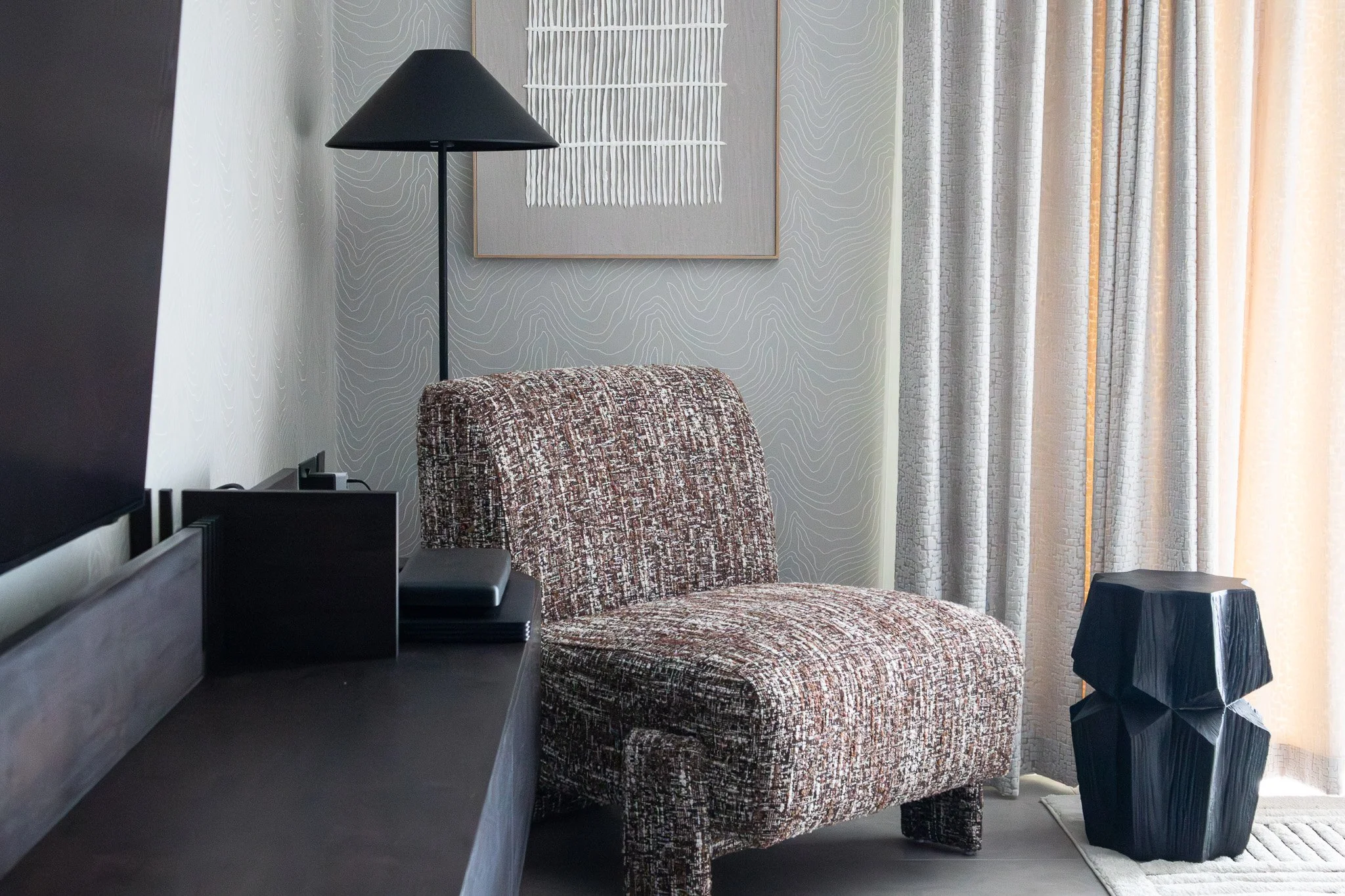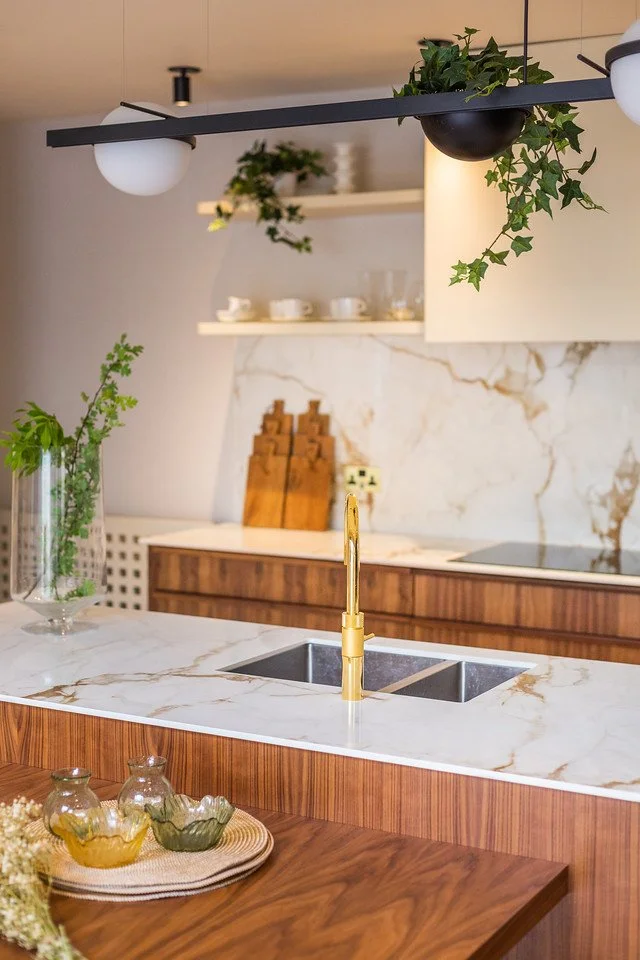How to Mix Nordic, Japanese, Scandinavian & Contemporary Styles Without Clashing
Blending interior design styles like Nordic, Japanese, Scandinavian, and Contemporary can result in a unique, balanced, and stylish home. But without thoughtful planning, it can feel mismatched. The secret? Harmony through textures, lighting, and statement pieces that bring cohesion to the space.
Looking for expert guidance? Work with an experienced Interior Designer in Cambridge!
Not sure which design style is right for your space? Read our guide on How to Choose the Right Interior Design Style.
1. Find Common Ground Among the Styles
These four aesthetics share core design principles:
Minimalism & Functionality: Clean lines, clutter-free spaces
Natural Materials: Wood, stone, linen, glass
Neutral Color Palettes: Soft whites, beiges, muted earthy tones
By focusing on these common elements, you create a seamless fusion rather than competing aesthetics.
Want to learn more about Scandinavian interiors? Check out our post on Cosy Scandinavian Design Essentials.
2. Layer Textures & Materials for Depth
A well-balanced mixed interior should feel warm and inviting. Achieve this through texture contrasts:
Nordic & Scandinavian: Soft wool rugs, linen curtains, handcrafted ceramics
Japanese: Bamboo panels, shoji screens, raw wood finishes
Contemporary: Polished marble, sleek metal fixtures, glass accents
Looking to enhance your home’s textures? Read our tips on Home Interior Design and how to furnish your home with Textiles
Bespoke curved headboard designed by Pinterior.space
3. The Power of Lighting: Creating Mood & Balance
Lighting plays a vital role in blending different design styles seamlessly. Consider:
-Layered Lighting: Combine ambient, task, and accent lighting for depth
-Scandinavian Warmth: Soft, diffused pendant lights, warm LED bulbs
-Japanese Serenity: Paper lanterns, soft glows, indirect lighting
- Contemporary Elegance: Sleek floor lamps, bold statement chandeliers
Need lighting ideas? Read our guide on How to Use Lighting to Transform Your Space.
Kitchen design : by Pinterior.space
4. Step-by-Step Guide to Mixing These Styles
Step 1: Define Your Dominant Style
Choose one core aesthetic (Nordic, Japanese, Scandinavian, or Contemporary) as your base.
Step 2: Select Complementary Accent Pieces
If Scandinavian is dominant, add Japanese accents like low-profile furniture or bamboo details.
Step 3: Focus on Balancing Textures & Lighting
Layer soft wool (Nordic), raw wood (Japanese), sleek metals (Contemporary) for depth.
Step 4: Introduce Statement Pieces
A standout Contemporary chandelier or Scandinavian lounge chair can tie mixed styles together.
Want more styling guidance? Read our post on How to Make a Small Space Feel Bigger.
5. Statement Pieces That Bring Personality
A well-chosen statement piece bridges the styles seamlessly:
Nordic: Wooden lounge chairs in neutral tones
Japanese: A Zen-style coffee table with organic edges
Scandinavian: Cozy Hygge-inspired wool throws and cushions
Contemporary: A bold, sculptural chandelier or metal-framed mirror
Looking for statement piece recommendations? Consult our Interior Designers Near Me.
Case Study: Nordic-Japanese Fusion in a Cambridge Home
A recent interior makeover blended Scandinavian warmth with Japanese simplicity in a Cambridge home.
- Soft neutral colours (off-white, soft greys)
-Layered lighting (warm LED tones with paper lantern accents)
-Minimalist furniture with cosy Scandinavian textures
Want to see more transformations? Explore our Contemporary Designer Projects.
Elitis - Art work : by Pinterior.space
FAQ: Common Questions About Mixed Interiors
Q1: What’s the easiest way to mix interior styles?
Start with a neutral base, then introduce accents like lighting, furniture, and decor from secondary styles.
Q2: How do I balance minimalist and maximalist elements?
Use layering—keep furniture streamlined but add bold statement pieces to add character.
Q3: What colours work best with Scandinavian and Japanese styles?
Soft earth tones—beige, taupe, muted greens, and natural wood tones—create harmony.
Need more home styling answers? Check out our blog on Interior Design Mistakes to Avoid.
Final Thoughts: Confidence is Key!
Mixing interior styles is an art, not a rigid formula. By thoughtfully blending textures, colours, lighting, and statement pieces, you can create a modern, stylish home that reflects Nordic, Japanese, Scandinavian, and Contemporary influences while maintaining warmth and personality.
Which design combination speaks to you the most? Let’s discuss in the comments below!
Need expert guidance? Connect with a trusted Interior Designer in Cambridge.




